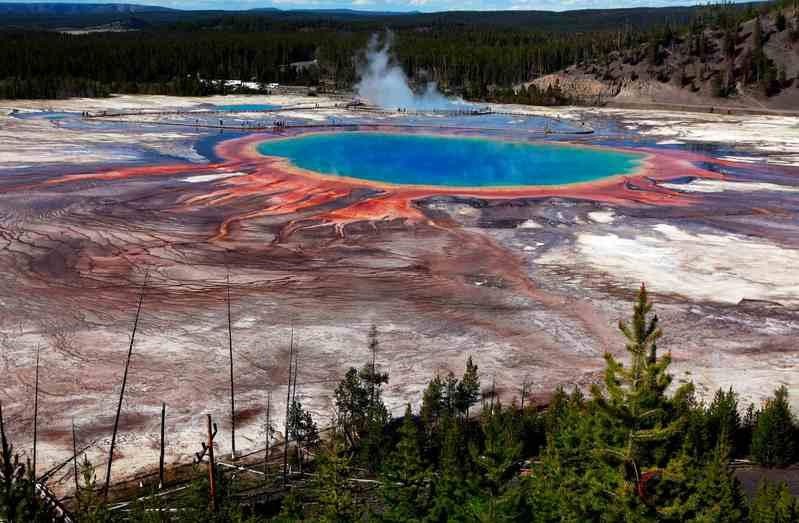Experts Discover Massive Supervolcano in Utah

North America's most well-known supervolcano, Yellowstone, is very popular and it last erupted around 640,000 years ago. The caldera of the supervolcano is measured to be around 34 by 45 miles.
However, this is not the continent's largest volcano anymore. A supervolcano which is 30 times larger than Yellowstone was found in the southwestern Utah town of Enterprise. It is said that the newly found supervolcano is significantly older than Yellowstone.
The geological aspects and landscapes of Southern Utah are now being studied due to its Pine Mountain, Veyo Volcano, which is stemming from Wah Wah Springs, a supervolcano.
In addition, it was estimated that the supervolcano Wah Wah Springs' last explosion was a one-week long eruption that happened around 30 million years ago.
According to Ron Smith, a local scientist, people think that Yellowstone is due to explode again because of the supervolcano's frequent activity.
Smith, a former University Professor in California and now living in Sun River, explained during his lecture at Dixie State University on Monday that, "Yellowstone has gotten a lot of publicity because of the severity of a supervolcano and the effect it would have on the earth. We cannot say that Yellowstone is overdue ... it is probably going to blow again but it could well be 500,000 years from now or a week from Tuesday." This contradicts the beliefs of some locals living near Yellowstone.
Meanwhile, the United States Geological Survey said that the probability of another explosion of the supervolcano Yellowstone in the next thousand years is exceedingly low.
Smith added that Wah Wah Springs released 30 times more ash and debris compared to Yellowstone. He also said that compared to more recent volcanic events it was 5,000 times larger than the eruption in 1980 at Mount St. Helen.
Researchers from Brigham Young University discovered about Wah Wah Springs in 2013. Researchers in the university was able to map out Wah Wah Springs because of its lava flows. They also said that it was very difficult for them to locate the Spring because of the soil erosion, however because of the efforts they made they found the ppring on the border of Utah and Nevada near Enterprise.
Eric Christiansen said in a press release that, "Deposits from the eruption are 13,000 feet thick in some areas of Southern Utah, and its remains can be found as far away as Nebraska," in 2013 he also said, "Imagine the devastation - it would have been catastrophic to anything living within hundreds of miles."
In a report from USA Today, Smith discussed during his lecture the risks that come from a volcanic activity like ash, lahar, climate change, and pyroclastic flow. Smith pointed out that ash, which what most people think when a volcano erupts, is not just like smoke coming from a campfire. This smoke contains tiny prices of rocks and minerals which can damage the lungs if inhaled.
Smith added that, "Volcanic ash is not only dangerous to breathe, but it also produces climate change that has a wide-range effect on human habitation of the earth."
Subscribe to Latin Post!
Sign up for our free newsletter for the Latest coverage!
© 2025 Latin Post. All rights reserved. Do not reproduce without permission.

















